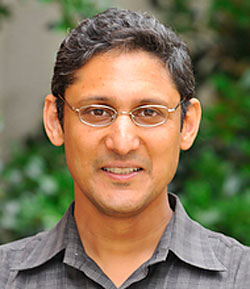Computer-Aided Design for Digital Signal Processing Systems Laboratory (DSPCAD)
2467 A.V. Williams Building
Learn MoreResearch in the DSPCAD Group focuses on computer-aided design (CAD) and implementation of digital signal processing (DSP) systems. DSP refers to the digital analysis and manipulation of data streams, such as those associated with audio signals, biomedical signals, control system components, digital communications waveforms, images, video streams. We work on many aspects of architectures, models of computation, and software tools for DSP system design, including specialized programming languages; synthesis and optimization of hardware and software; hardware/software co-design; and DSP implementations on field-programmable gate arrays (FPGAs), multicore processors, graphics processing units (GPUs), and application-specific integrated circuits (ASICs). The long-term goal of this research is to improve the productivity of designing DSP systems, as well as the reliability, predictability, and efficiency of DSP system implementations. Active research projects in the group, and areas in which we have made significant accomplishments include the following topics:
- The dataflow interchange format (DIF), a dataflow language for design and implementation of signal processing systems.
- DICE: The DSPCAD Integrative Command Line Environment.
- LIDE: The DSPCAD Lightweight Dataflow Environment.
- GPU-based acceleration of signal processing applications.
- Memory and buffer management for DSP hardware and software.
- Applications and tools for configurable computing.
- Mapping algorithms onto multiprocessor DSP systems.
- New computational models for more efficient programming of DSP systems.
- Novel architectures for improving performance and predictability of DSP applications.
- Low power implementation of embedded applications.
- Architecture and optimizations for low power sensor networks.

|
Shuvra S. BhattacharyyaProfessor(301)405-3638 | ssb@umd.edu Profile |
Top